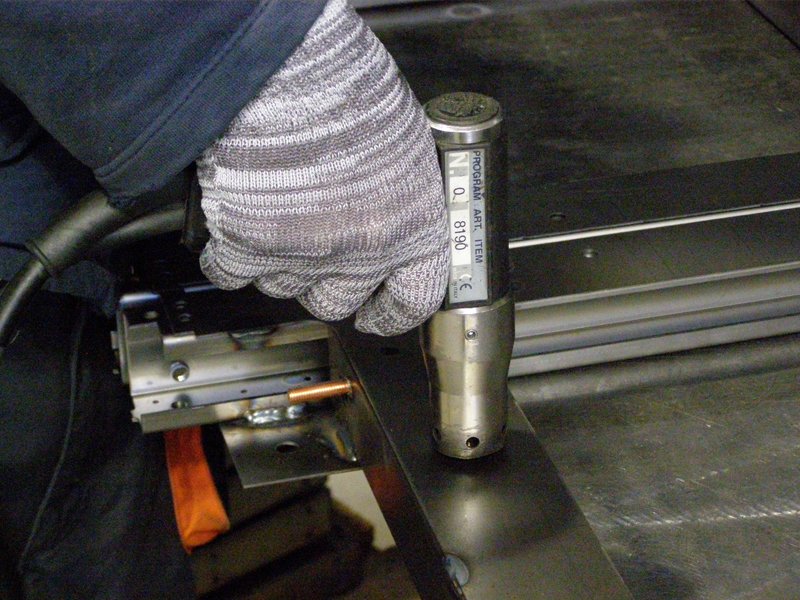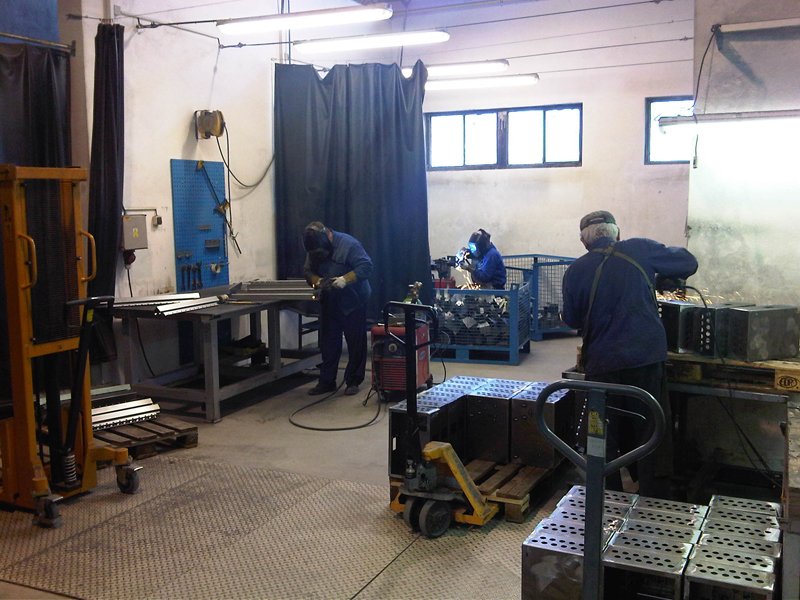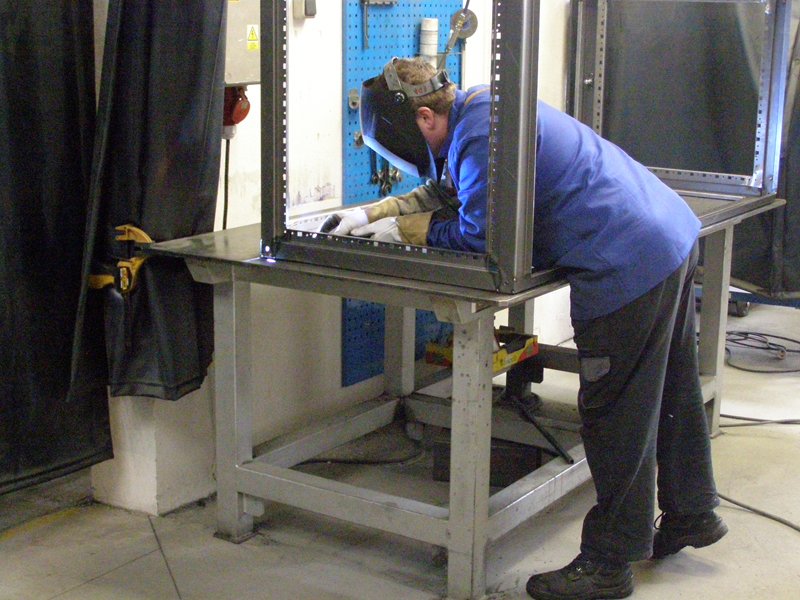Sheet metal welding
Sheet metal welding
The basis for successful welding of sheet metal is a good preparation. Quality of cutting, punching, bending and breaking of sheet metal heavily influences the welding process. Precise and stable set up is also essential for products sheet metal to be consistent.
Technology of welding sheet metal
Technology of welding sheet metal has direct impact on the design of the seam and the risk of damaging the sheet metal. Welding thin sheets i.e. to about 3 mm (cold rolled) to 4 mm (warm rolled) is among the most common, but also the most difficult sheet processing methods. The risk of deformation of the sheet in fact increases as the thickness decreases.
Spot welding is one of the most widely used technology in industrial engineering. It is mainly used for welding sheet metal, like resistance welding. Its competitors are riveted and bonded joints, but sheet metal welding still keeps its place. Modern welding machines solve the major problems such as low productivity, high costs and demands on health and safety at work.
Generally speaking, welding is keeping its popularity even among amateurs. The fact, that welding technologies are becoming cheaper and easier to operate and maintain help greatly.
The beginnings of modern sheet metal welding can be, with a little exaggeration, traced back to the 16th century. People began using a hydrogen air flame to bond weld metal. At the time of the industrial revolution in the 19th and 20th centuries, industrial production of calcium carbide appears, pushing the sheet metal welding forward by leaps.
Many new methods follow up the old gas welding, which, although its still used in many industries today, but from the standpoint rather retreats. Among these technologies are for example arc welding, resistance welding, stud welding, spot welding and welding in shielding atmosphere. We should not forget additional technologies as the electro slag welding and electron beam welding.
Types of welding according to CSN:
- 311 flame
- 111 electric arc - coated electrode
- 114 electric arc - filled electrode without shielding gas
- 131 Arc welding with consumable electrode in inert gas (MIG)
- 135 Arc welding withconsumable electrode in active gas (MAG)
- 136 Arc welding with flux cored electrode in active gas
- 137 Arc welding with flux cored electrode in inert gas
- 141 Arc welding with non-consumable electrode in an inert gas (TIG, TIG)
- 12 below the meld
- 15 plasma welding and material cutting
The basic division in terms of welding technology is the fusion welding and pressure welding. We are primarily engaged in sheet metal welding, and therefore off these two areas we choose the mostly used technologies for welding sheet metal.
Resistance spot welding
Anyone who ever was around sheet metal welding, definitely remembers at least two concepts: spot and resistance welding. Both of these concepts are substantially permeate, as the spot welding is the most widespread method of resistance welding. In opposition to it, there is still resistance seam welding of sheet metal.
Resistance welding is used to weld the two materials lying on one another. It is very common for products made of sheet metal or even steel mesh. These metals are welded by copper electrodes, because there is great resistance (contact resistance in the contact of welded materials) in between them and therefore a significant heating as well, which results in welding the sheets together. While simultaneous influence of pressure thereby causes localized welding.
Resistance spot welding is a local welding in the vicinity of stable electrodes. During seam resistance welding, the sheets are weld together with long seams, since the electrodes are moving.
Electrodes for spot welding of sheet metal are usually made of copper. But cobalt and cadmium alloys, or copper and silver alloys may be used as well.
Perhaps the greatest benefit of resistance welding is the possibility of use for automated mass production as well as manual adjustments and corrections needed for example in garages.
Shielded arc welding
Another method of welding sheet metal is shielded arc welding with consumable melding electrode. This is a type of fusion welding and it is rarely used for products made of sheet metal in comparison to resistance welding. Its parent group is arc welding.
It is in principle melting of the welding wire (or a metal fed through a tube) in a protective atmosphere (gas supplied from the tank) by means of a welding torch that is powered by a powerful power source. A so called Weld pool is created by melting the metal.
Welding gases are designed to prevent chemical reactions at the welding point, which would mean a reduction in the quality of the seams. Another function is to protect the device itself.
In Europe, we distinguish the welding methods MIG and MAG. MIG sheet metal welding uses a shielding atmosphere of inert gases (argon and helium), and MAG then active gases, which are involved in metallurgy (carbon dioxide).
A related method is called. MOG welding, but it does not use a shielding atmosphere.
To return back to sheet metal welding, we should remember one more similar method, namely TIG / WIG. It is also a shielded arc welding, but in this case only with inert gases and using a non-consumable electrode.
Helium and argon are most often used as protective gases. Sometimes mixtures with hydrogen or nitrogen are used as well.
It is mainly used for manual welding of different materials and it places great demands on the welder. It combines the handling of the torch and the welding material. Its effectiveness is in comparison to MIG / MAG much lower. On the other hand, it advantage is lower cost (especially of the equipment) and the ability to weld a wide variety of materials.


